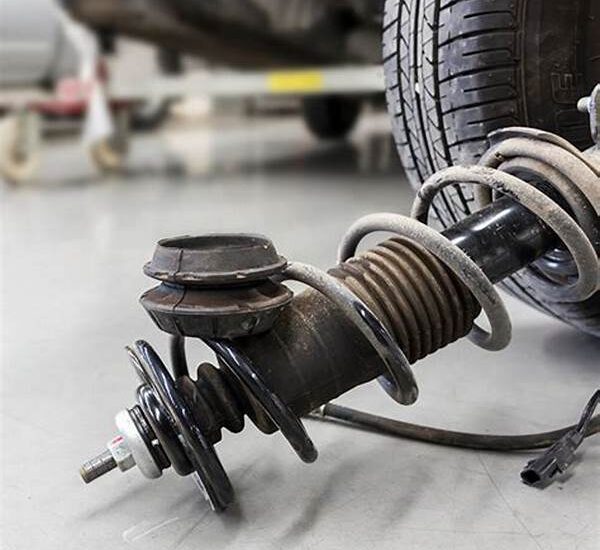
Detecting Suspension System Issues
In the ever-evolving world of automotive care, the suspension system serves as the unsung hero of a smooth, comfortable ride. Yet, many vehicle owners overlook the suspension system until it’s too late. Detecting suspension system issues early can save you from costly repairs or even dangerous driving conditions. Understanding how to identify and address these problems not only improves vehicle performance but also ensures safety on the road. Take proactive steps today and embrace the peace of mind that comes from knowing your vehicle’s suspension is in top condition.
Read Now : Value-for-money Mechanic Solutions
Importance of Early Detection in Suspension System Issues
Early detection of suspension system issues is vital for every vehicle owner. Just like a small crack can compromise the integrity of a dam, ignoring minor suspension problems can lead to significant and costly damage. The suspension system is integral to your vehicle’s performance, ensuring comfort, stability, and safety. Ignoring it jeopardizes not just your wallet, but your wellbeing on the road. Timely detection and repair of suspension issues bring numerous benefits – extending the life of your vehicle, improving driving comfort, and most crucially, maintaining safety standards. Thus, understanding and identifying signs of suspension wear and tear becomes an indispensable skill for responsible vehicle ownership.
Five Key Indicators of Suspension System Trouble
1. Unusual Noises: Detecting suspension system issues often starts with your ears. Rattling or clunking noises when navigating bumps could signify worn-out parts that need immediate attention.
2. Uneven Tire Wear: Consistent uneven wear on tires can indicate serious suspension alignment issues, demanding investigation to prevent further damage.
3. Steering Difficulties: Feeling your steering wheel drift or needing constant correction? This could be a telltale sign that something’s amiss with the suspension.
4. Experiencing Bounce: If your vehicle continues to bounce after hitting a bump, it’s likely time for a suspension check. Persistent bouncing reduces control, affecting vehicle safety.
5. Nose Diving: Noticing your car dip forward when braking sharply? This is a classic symptom of suspension failure, warranting immediate professional inspection.
Practical Steps to Diagnose Suspension System Issues
Embracing the responsibility of detecting suspension system issues can seem daunting, yet it is surprisingly achievable. Start with a simple visual inspection – look for leaks in the shocks or struts. Pay attention to how your vehicle handles; a change in how it takes corners or handles rough roads should raise red flags. Regular maintenance checks conducted by a professional can further safeguard against unforeseen troubles. Detection isn’t just about fixing existing issues, but preventing future ones. Being proactive in these diagnostic steps ensures your vehicle remains both safe and efficient, sparing you from inconvenience and ensuring longevity on the road.
Read Now : Best Automotive Socket Set Reviews
How to Address Detected Suspension Problems
Addressing detected suspension problems quickly is essential to avoid further complications. Acting swiftly on detected issues preserves the integrity of your vehicle. Engage with a certified mechanic who understands the intricacies of suspension systems. An experienced professional can provide a comprehensive analysis and offer practical solutions, ensuring repairs are effectively and efficiently carried out. Beyond repairs, consider regular check-ups as part of routine vehicle maintenance. This preemptive approach is a small price to pay compared to potential future failures caused by neglecting your suspension system. Safeguard your investment by remaining vigilant and proactive in maintaining this crucial component.
Detailed Look at Common Suspension Symptoms
Understanding the nuances of detecting suspension system issues means delving into common symptoms you might face. Noise, one of the primary indicators, shouldn’t be ignored. Think of it as your vehicle’s way of communicating distress. Regular unusual sounds usually precede more severe problems, and catching them early is paramount to avoiding spiraling repair costs. In tandem, analyzing tire wear can offer insights – unevenness is a clear cry for help from your suspension. Further, consider the experience of steering, a real-world signpost towards suspension integrity. Engage with these sensory cues, allowing them to guide you towards timely intervention, fortifying safety and maintaining the smooth running of your vehicle.
Why Suspension System Health Matters
The health of your suspension system cannot be overstressed. Detecting suspension system issues is not merely an exercise in caution but necessity. A well-maintained suspension framework translates to a seamless, comfortable drive, underpinned by stability and safety. It plays a pivotal role in how your vehicle handles stress points like corners and uneven terrains, thus directly influencing driving safety. Investing time in understanding these issues means prioritizing the reliability of your vehicle. Reliability here equates to safety, longevity, and cost-effectiveness. Become an advocate for uncompromised vehicle efficiency by continually sharpening your understanding of suspension system signals and maintenance practices.
Conclusion: The Importance of Active Monitoring
In essence, regularly detecting suspension system issues forms the foundation of responsible vehicle ownership. By committing to proactive monitoring, you ensure that minor concerns don’t escalate into major failures. In this light, sustained vigilance becomes not just a responsibility but a proactive measure of care. This practice guards against needless expenditure and enhances roadside safety. Implementing an active monitoring routine guarantees that your travels remain uninterrupted by unforeseen disruptions. Remember, a vigilant approach cultivates a deep-rooted assurance – the peace of mind knowing that your vehicle operates effectively and safely in all conditions. Opt for proactive care and let diligence define your driving experience.